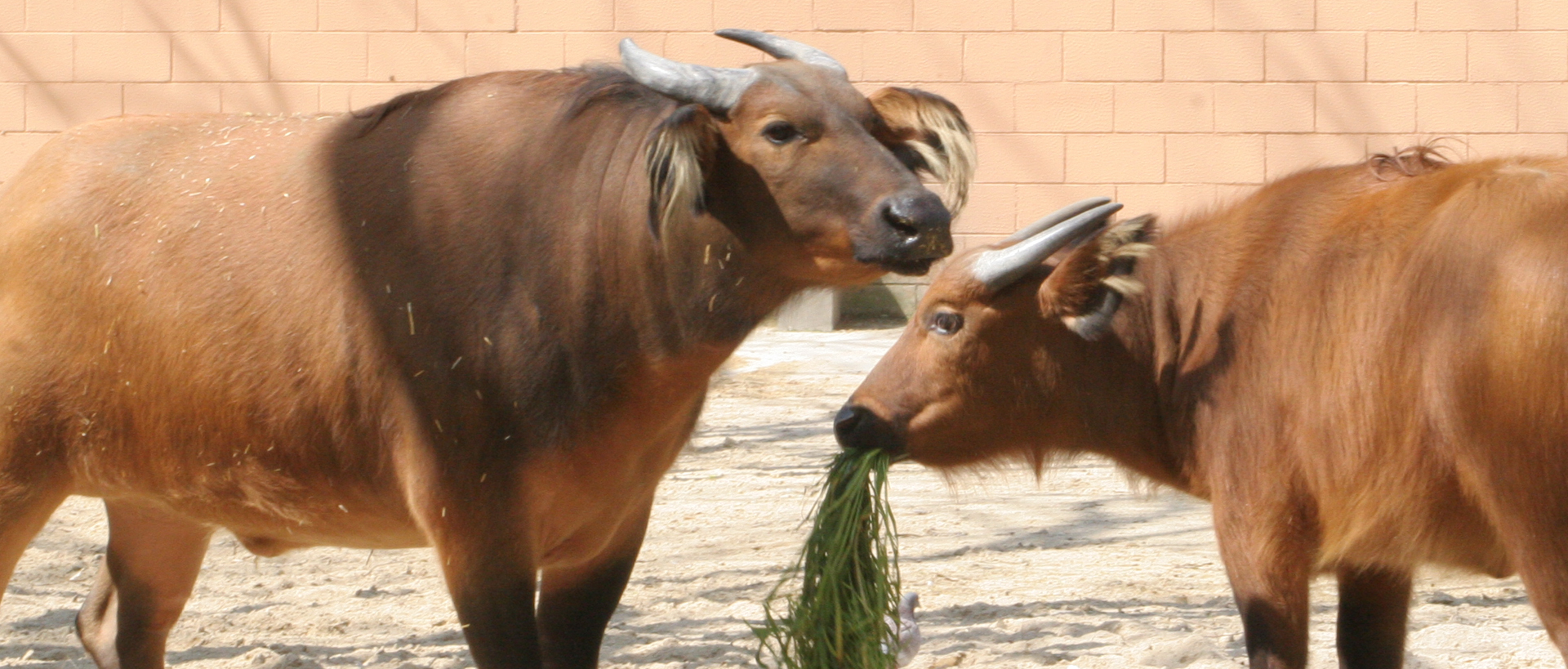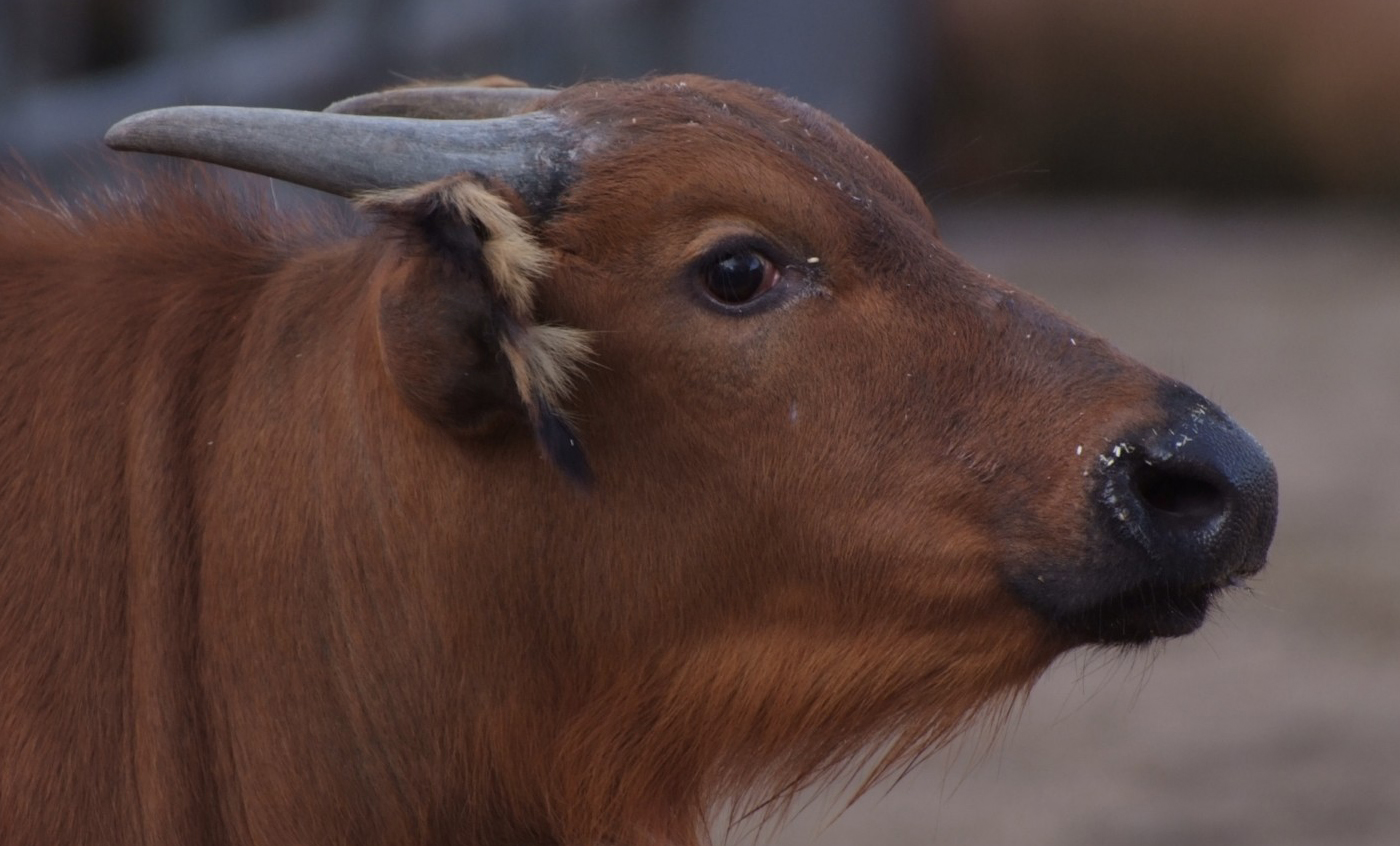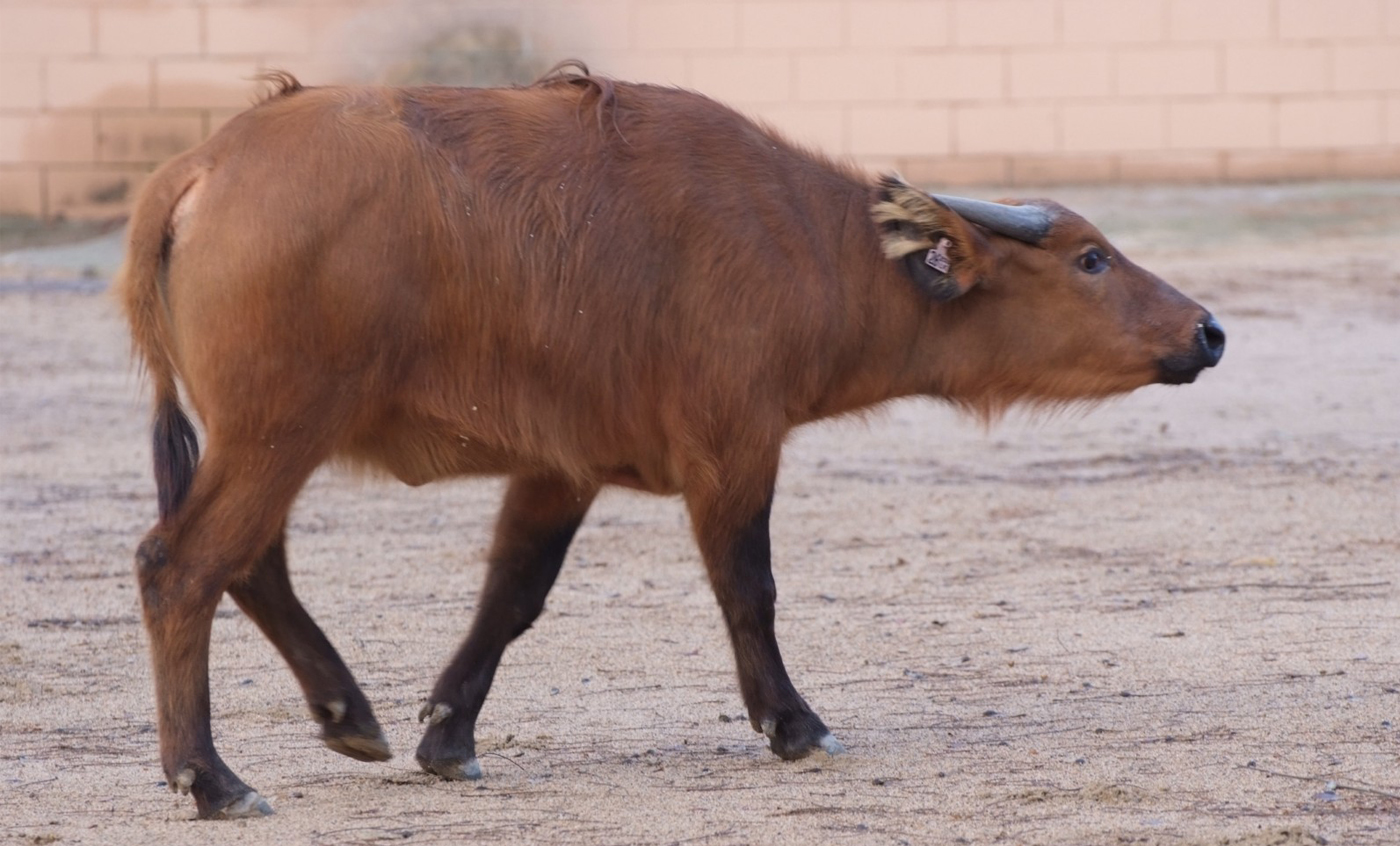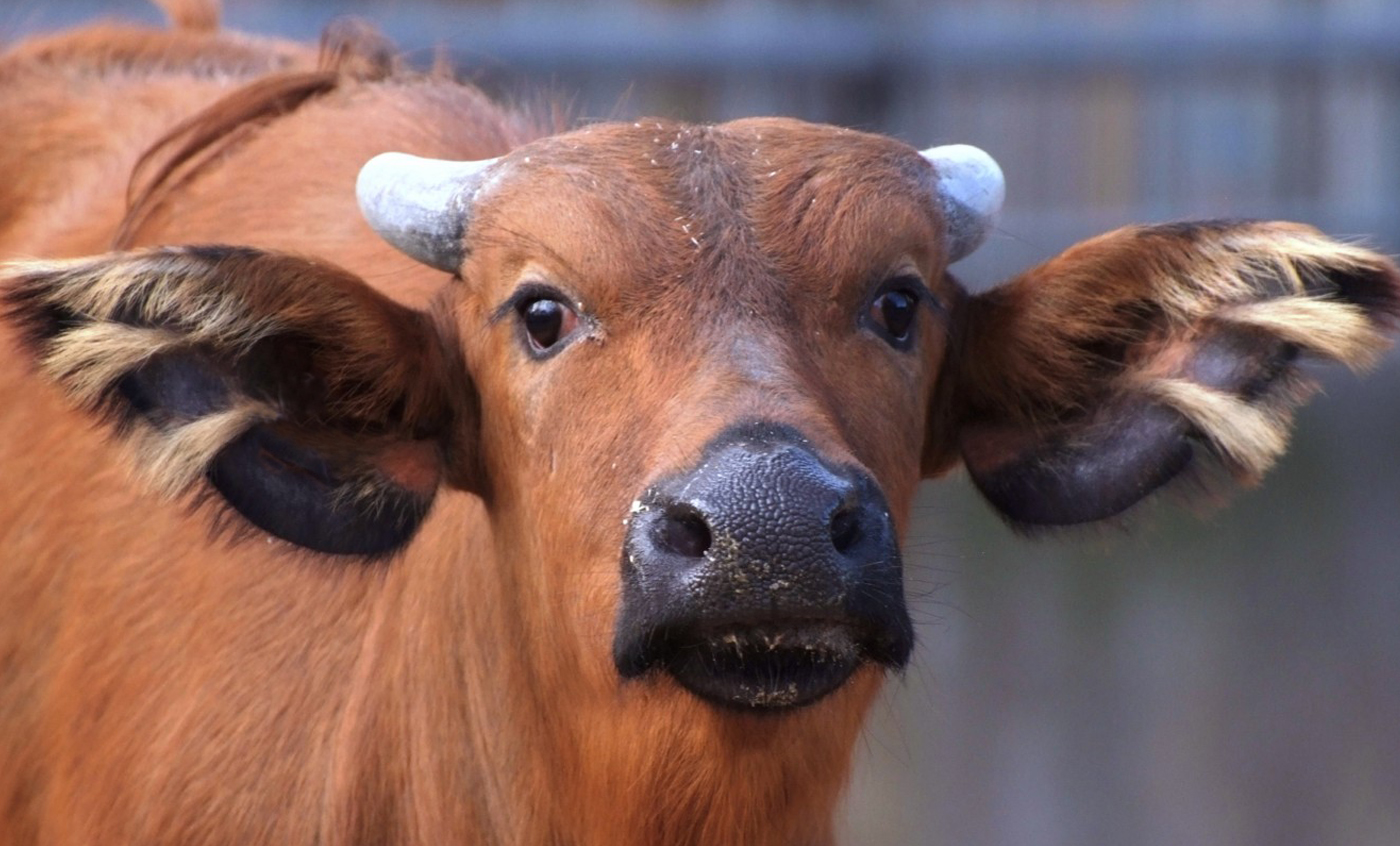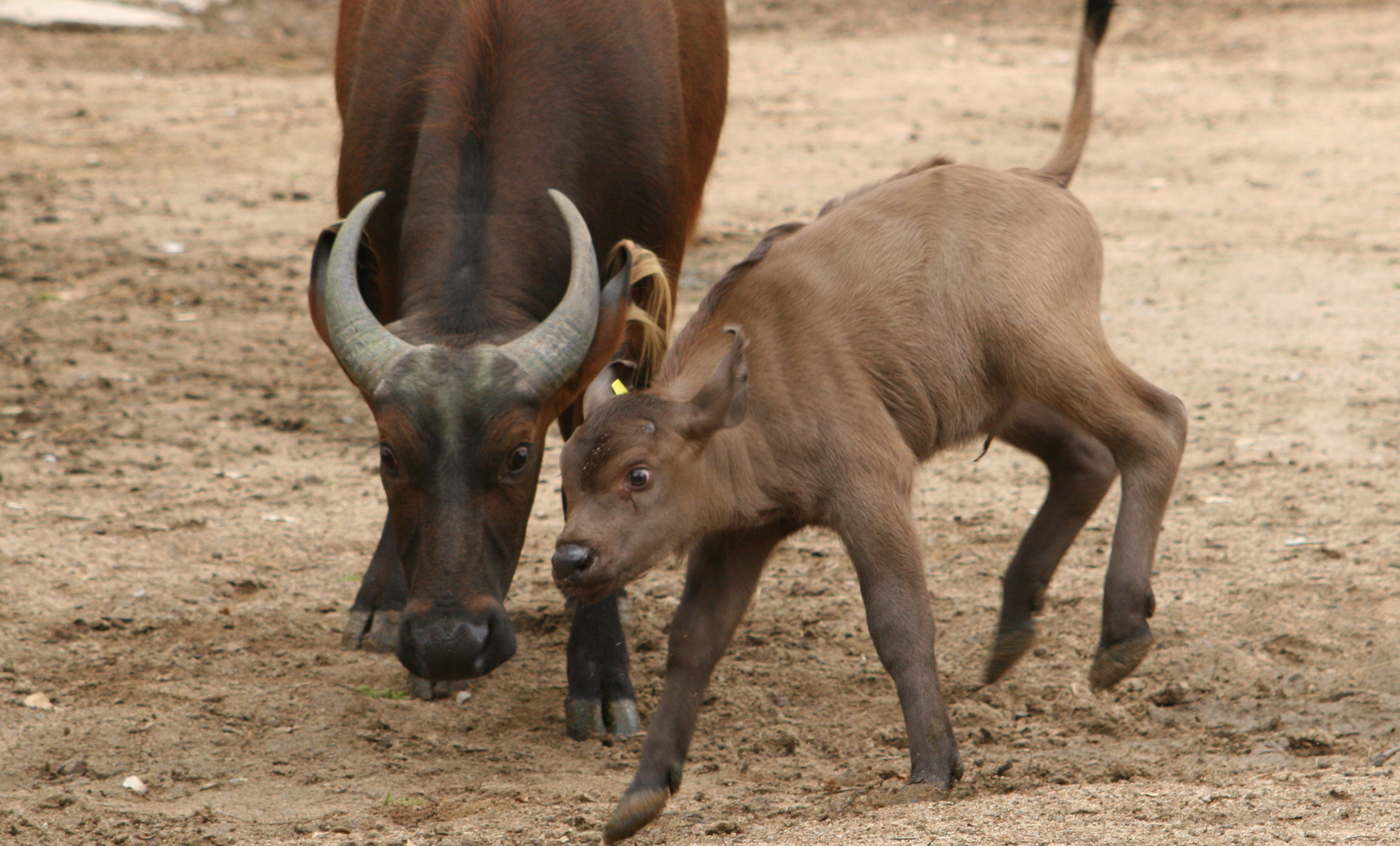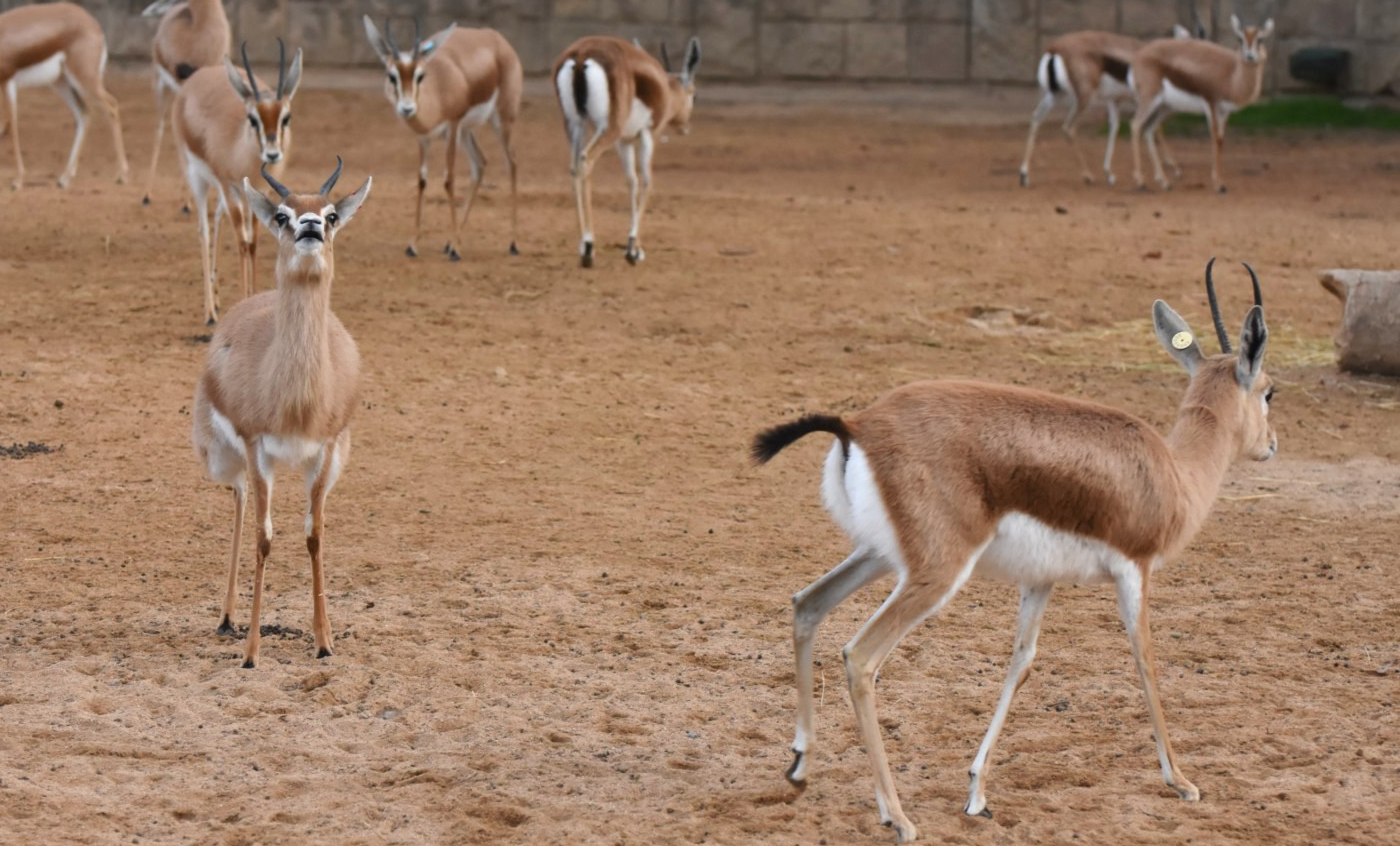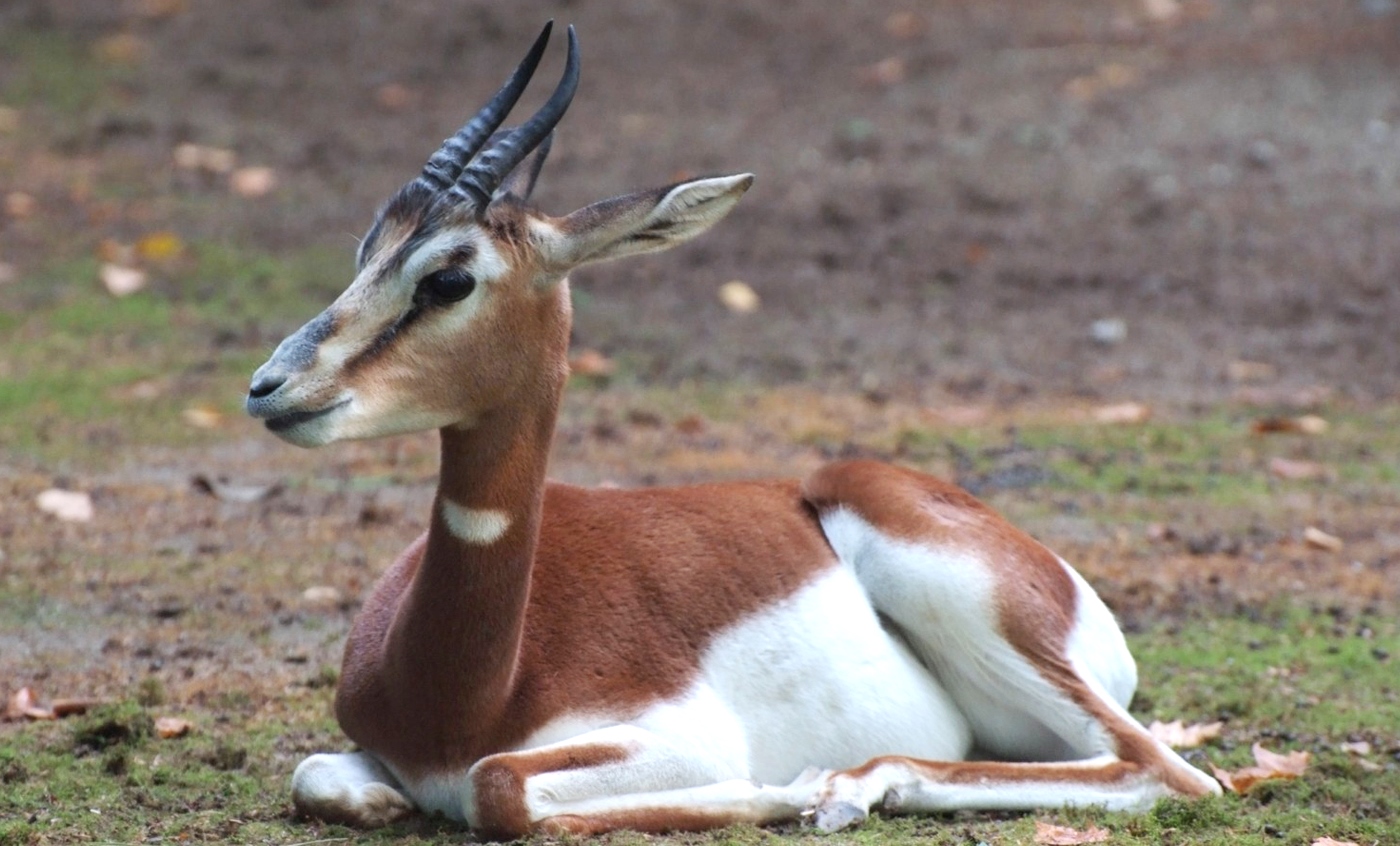Forest buffalo
It is the African buffalo subspecies, adapted to the life in the African rainforests. It is a small animal, compared to its large parent of the savannah, which can be also distinguished by its red coat.
It lives in small herds of less than 20 members, which usually consist of a single adult male, females and their offspring. As in the buffalo of the savannah, solitary animals are common, as well as groups of young males only.
Breeding program
Natural habit
Plain rainforests of the Democratic Republic of the Congo, Gabon, Republic of the Congo, southern Cameroon, southern Nigeria, Equatorial Guinea and the Sao Tomé and Príncipe Islands. Small isolated populations in central and western Angola.
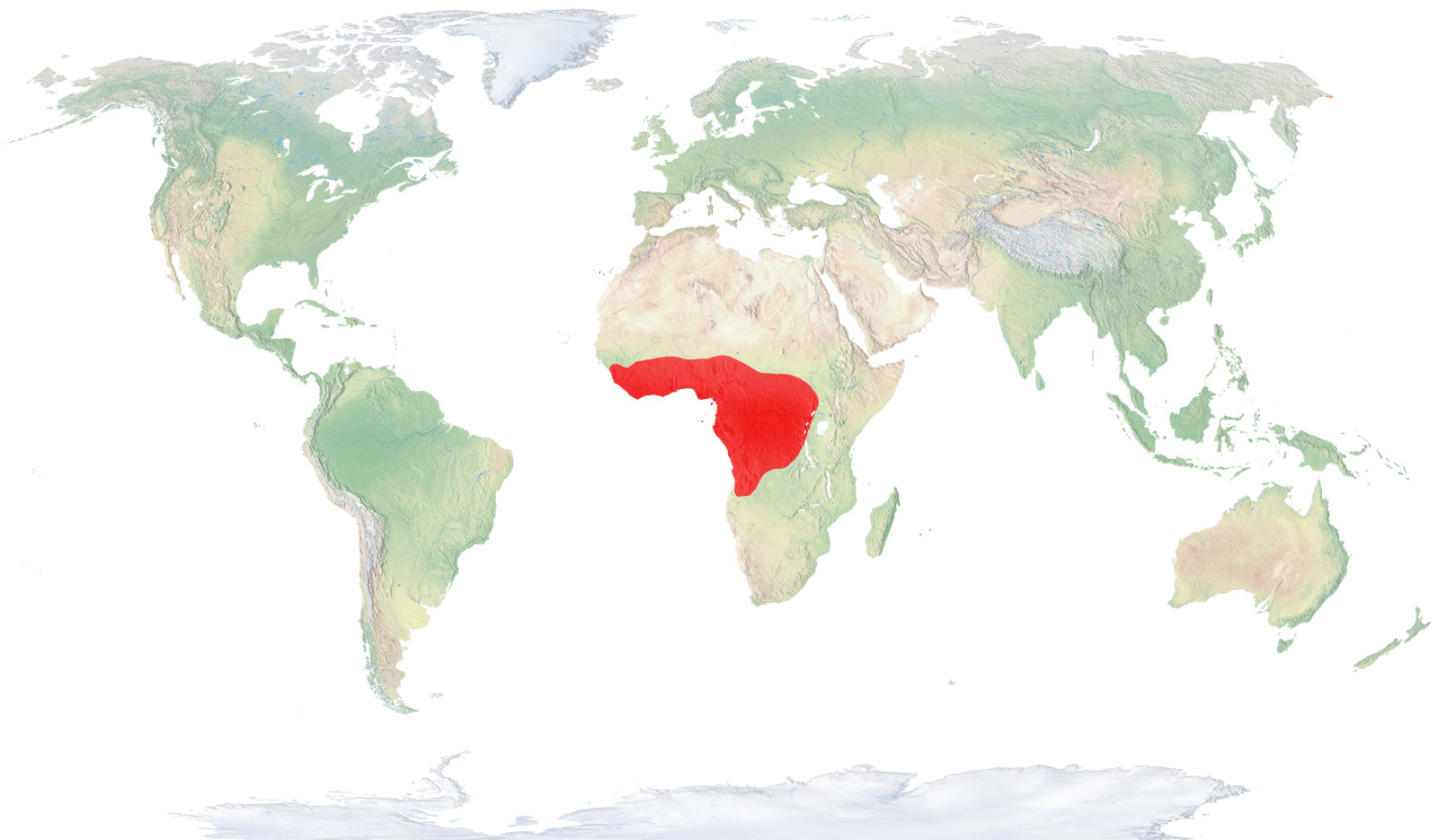
- Distribution / Resident
- Breeding
- Wintering
- Subspecies
Risk level
- Extint
- Extint in the wild
- Critically endangered
- In Danger
- Vulnerable
- Near threatened
- Minor concern
- Insufficient data
- Not evaluated
Taxonomy
Physical characteristics
Biology
Reproduction
Biology
It is the smallest and lighter of the African buffaloes, as an adaptation to life in the jungle, which requires a small and compact body to penetrate into the vegetation. Its fur is longer, with a reddish brown colour than the buffalo of the savannah, although older African forest buffaloes sometimes have dark brown fur. Its horns are smaller than the ones of their savannah counterparts, and they are curved more upwards.
It inhabits the plain rainforests of central Africa, preferably dwelling near clearings and water sources.
It feeds on grass, tender sprouts, canes, aquatic plants and leaves.
Gestation lasts for almost one year and they do not reproduce seasonally, but any time of the year. During their first weeks of life, calves remain away from the group with their mothers, who are especially aggressive before any possible danger.
Unlike its savannah counterpart, who can form large herds of hundreds of individuals, the African forest buffalo tends to live in small family groups of four or five members, while the bigger herds that sometimes gather under certain circumstances, rarely exceed twenty animals. Due to its size and aggressive behaviour, it has few predators so, apart from humans, only lions and crocodiles can be a threat for this animal.
Despite being still common in some regions, especially in parks, reserves and other protected areas, during the last decades, the populations have decreased considerably, due to the deforestation of their rainforests, excessive hunting, outbreak of infections such as anthrax, rinderpest or bovine tuberculosis passed by domestic cattle, or the extension of mining and oil exploitations within its habitat. In fact, it is extinct in countries like Liberia, Ivory Coast, Ghana, Togo or Benin.
Some scholars consider the African forest buffalo to be a different species, Syncerus nanus, and not merely a subspecies of the African buffalo Syncerus caffer.
The Zoo of Barcelona takes part in the ESB of this subspecies.




